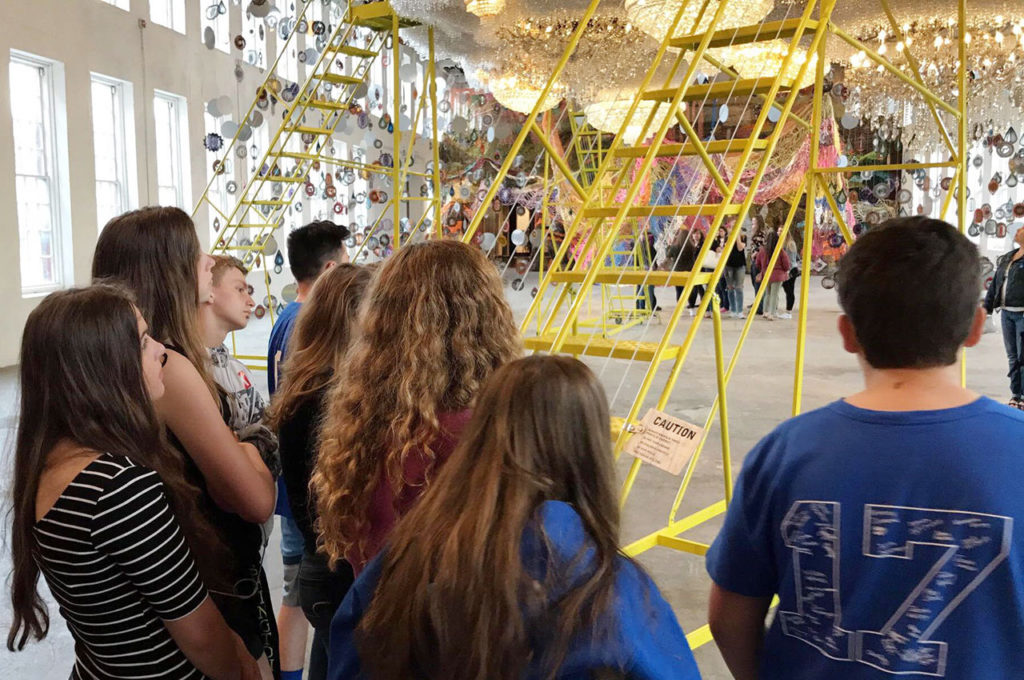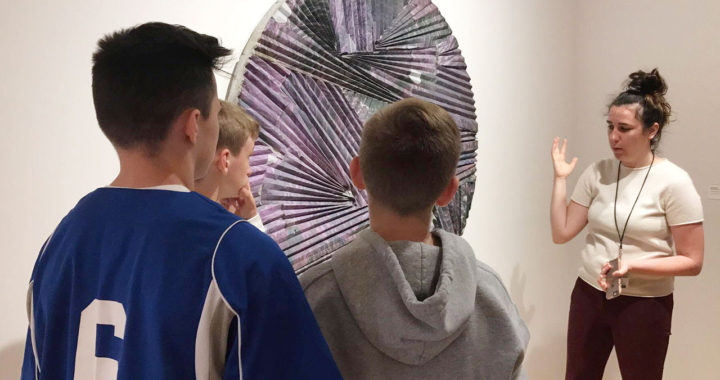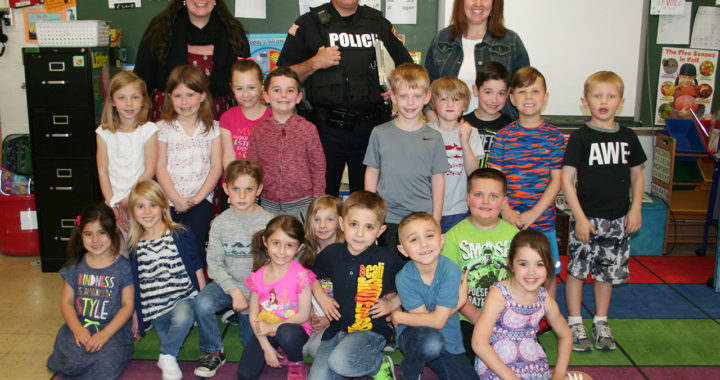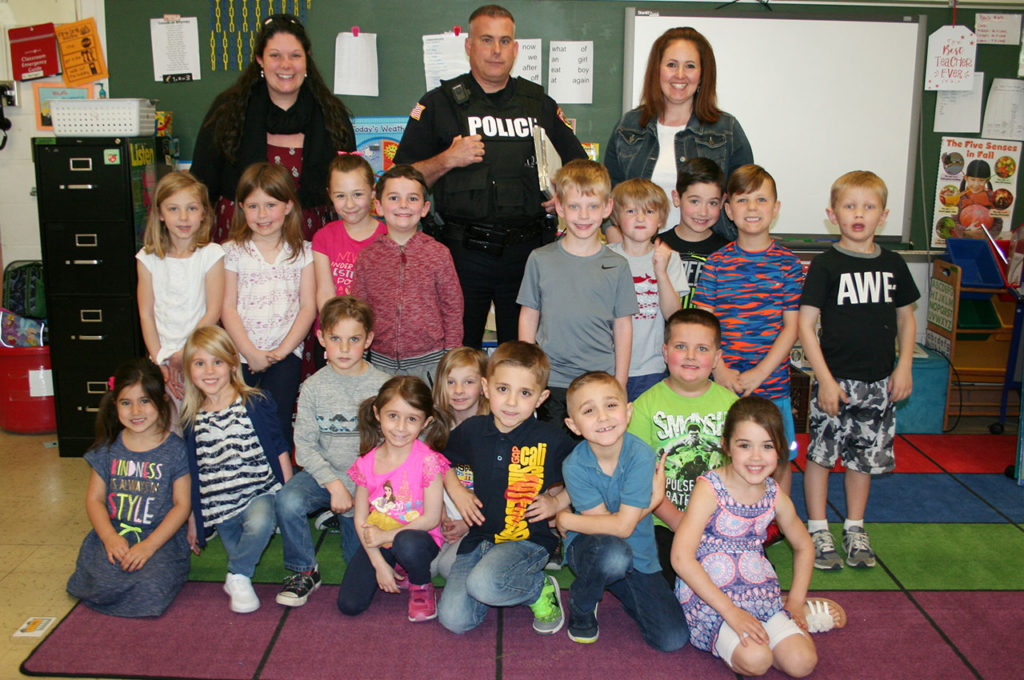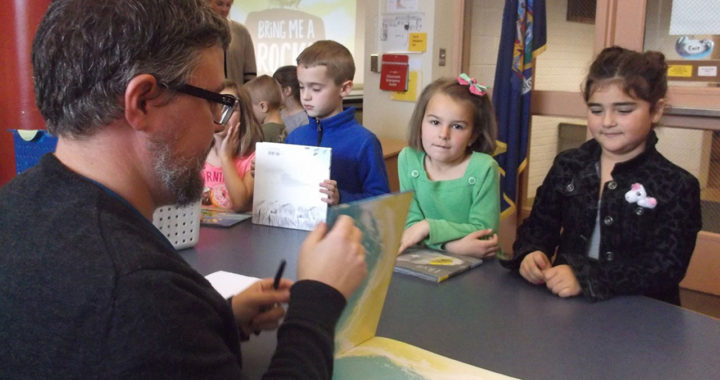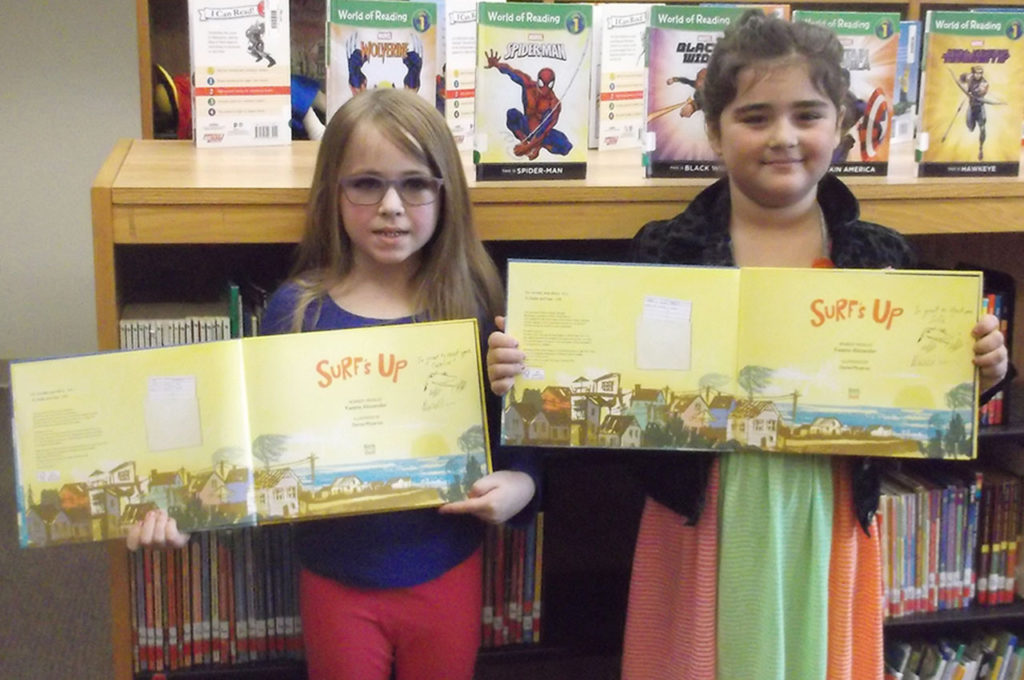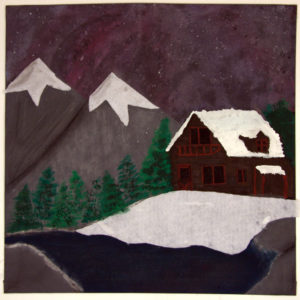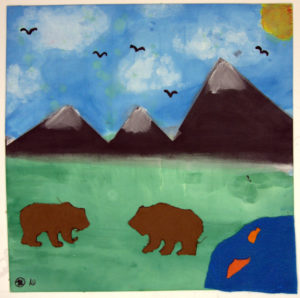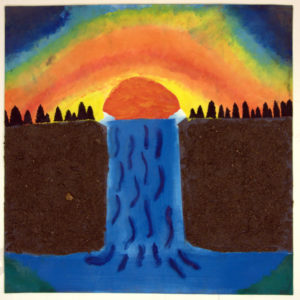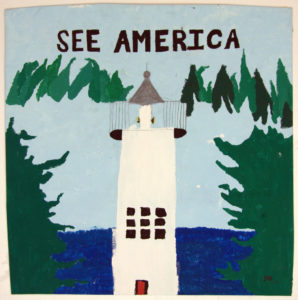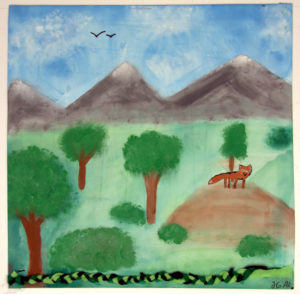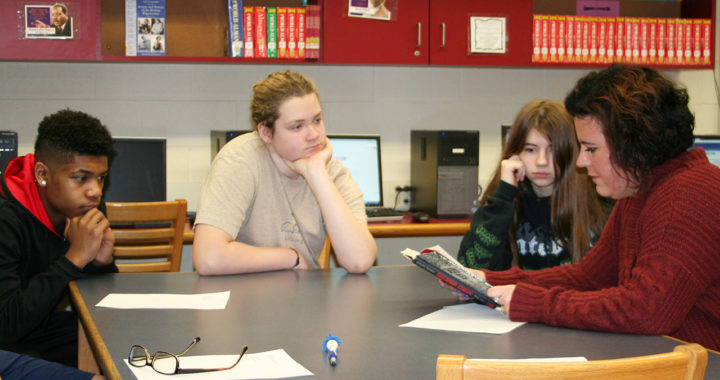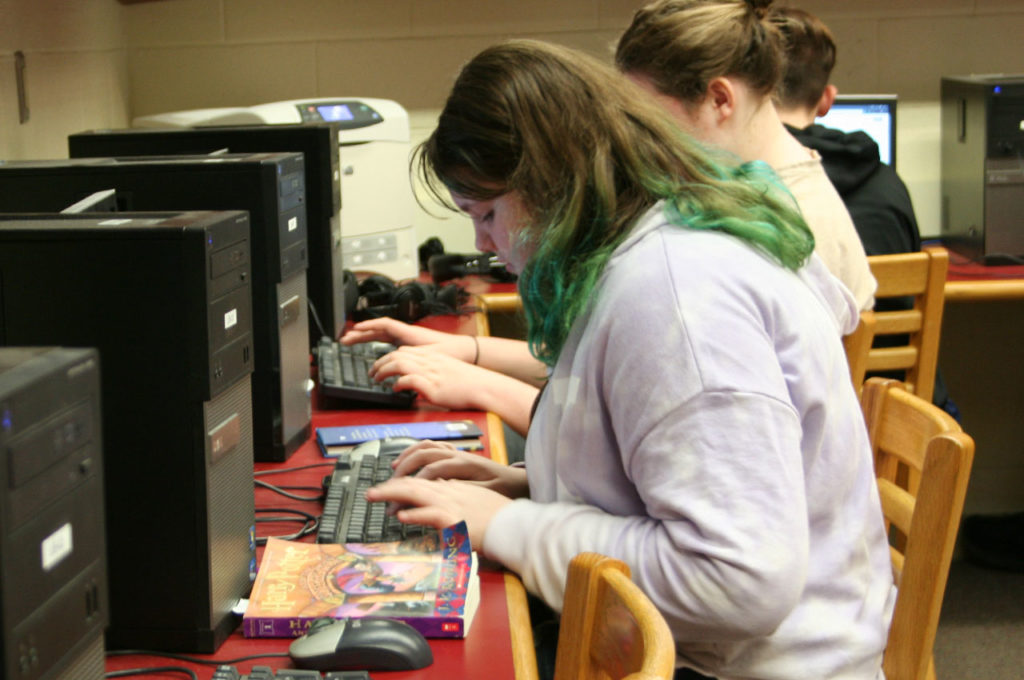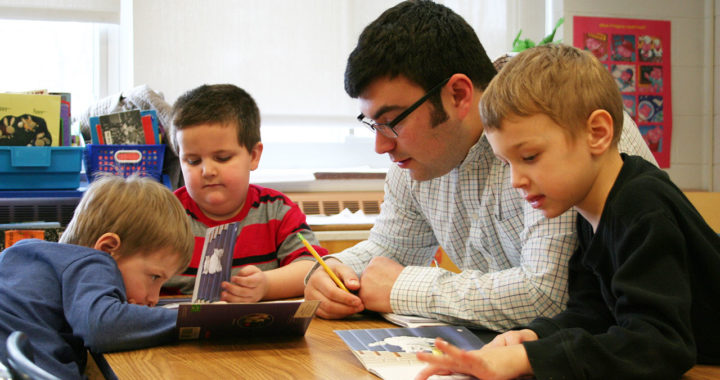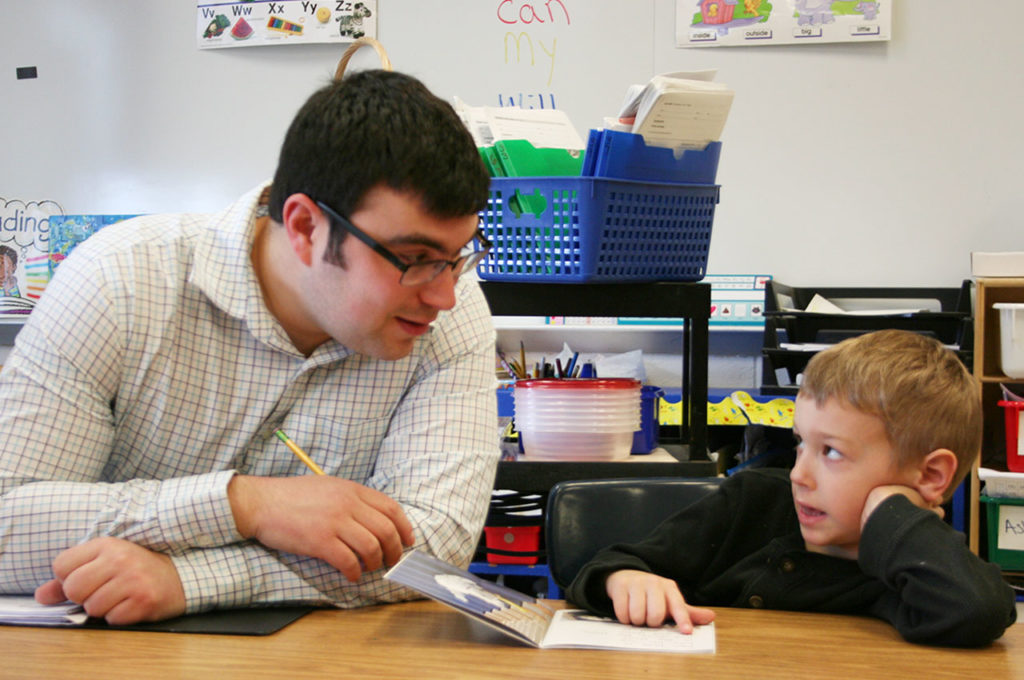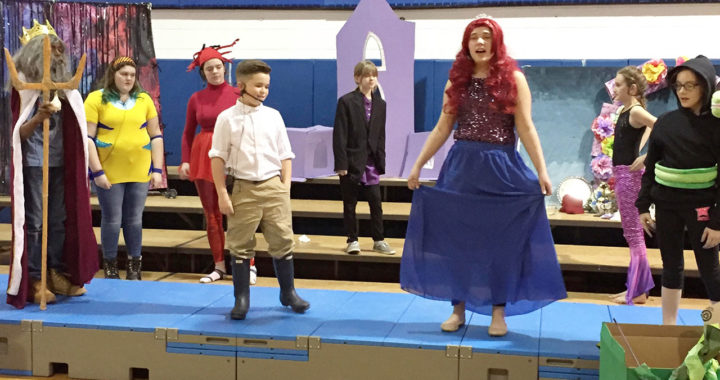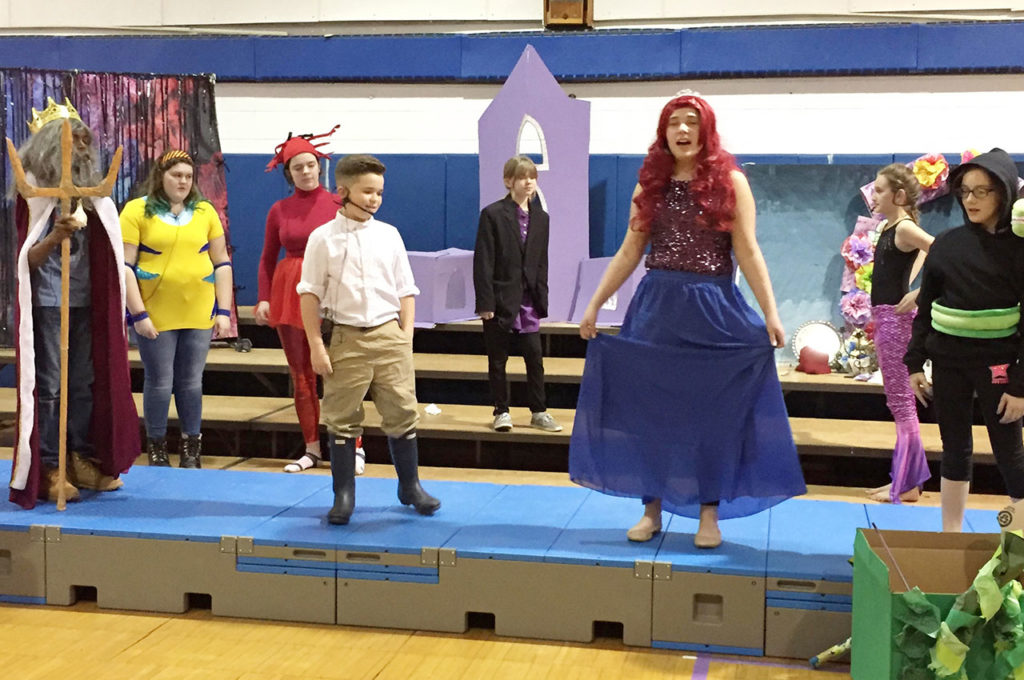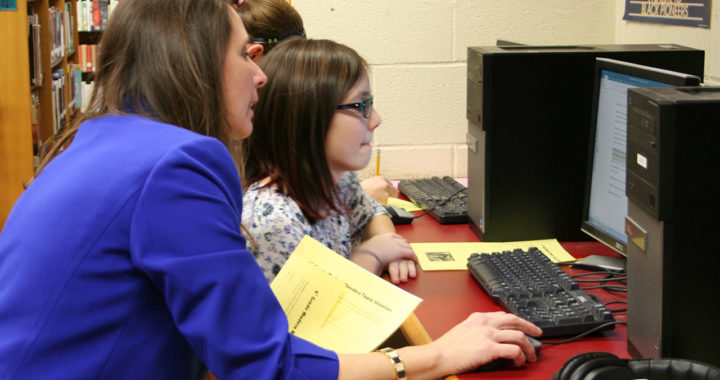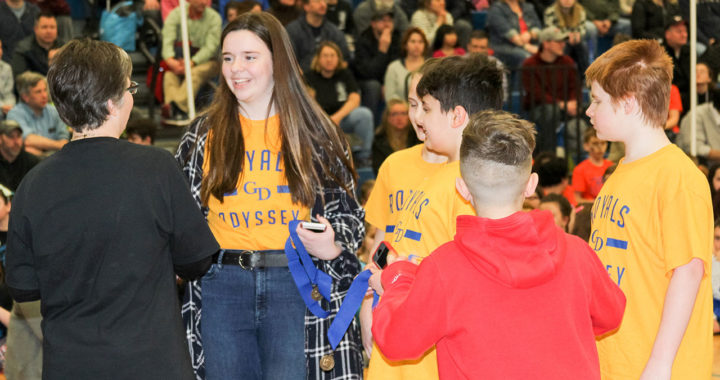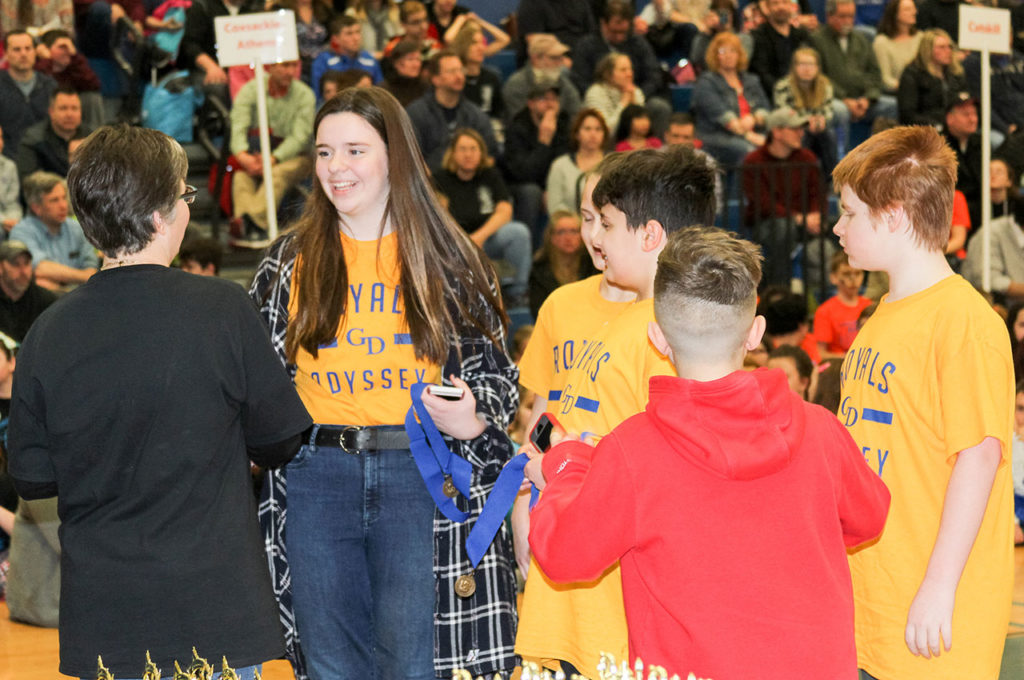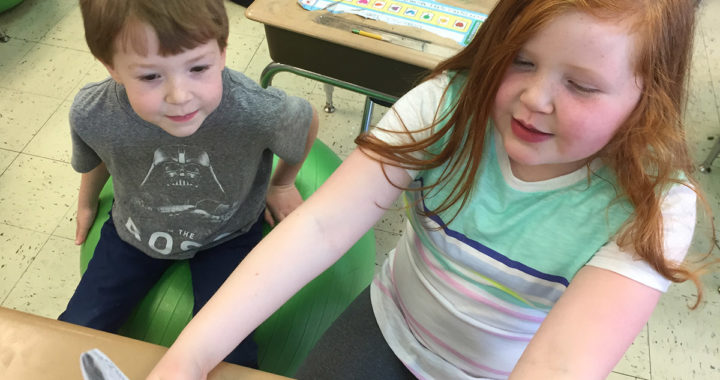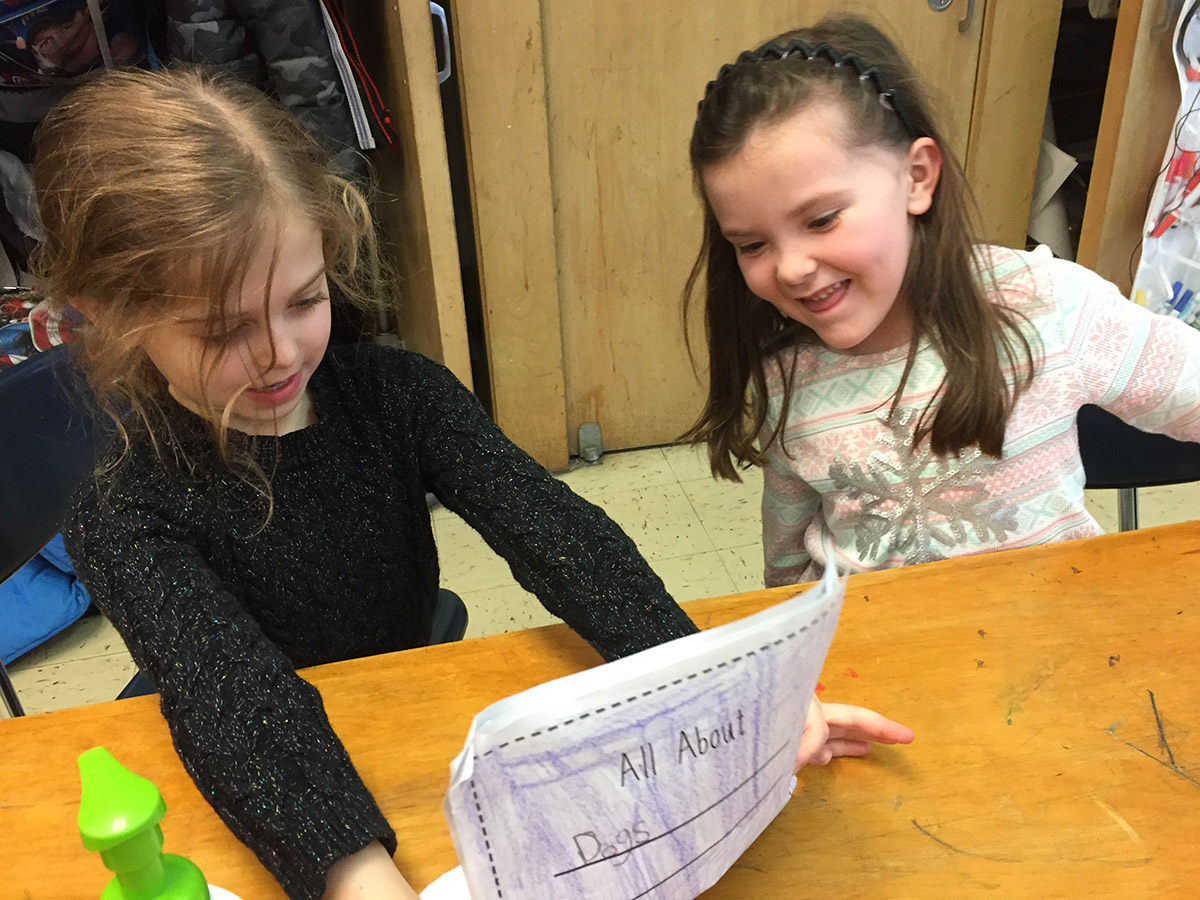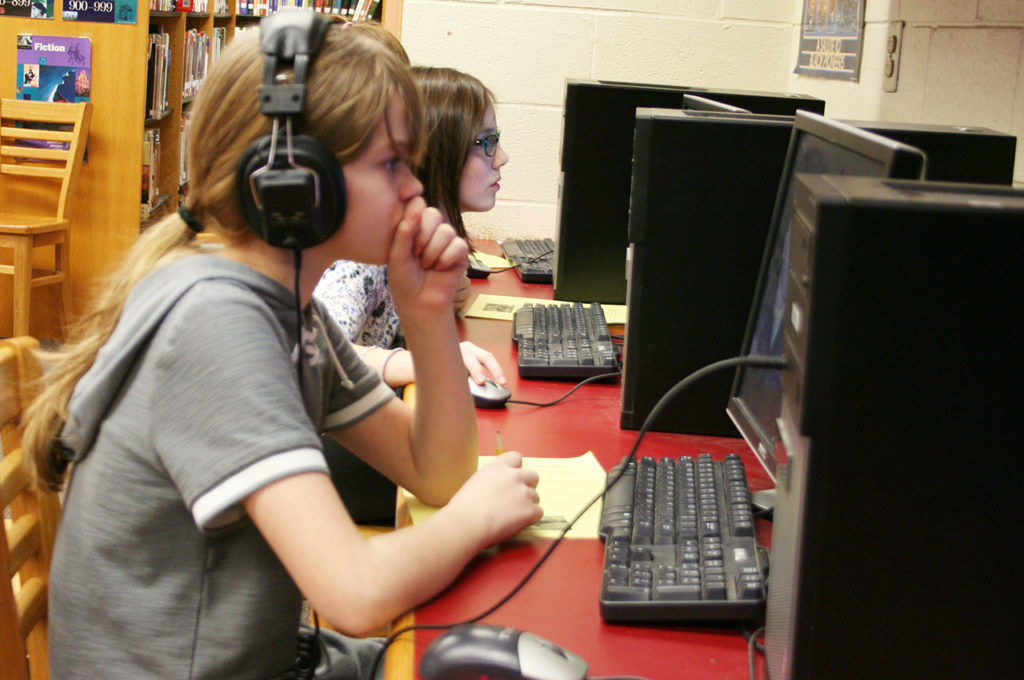
Ask a Gardner-Dickinson 6th grader about their Demigods research project and you’ll get an earful.
“I was really excited to research as much Greek mythology as I could,” said student Isabella Marte. “We had to research the god’s appearance, their personality, and their image on a notecard. I chose Paen, he is a satyr, which is a half-goat, half-man. He created the pan flute and the word panic actually came from him because he liked to jump out and scare people sometimes.”
What made the library project particularly engaging for students was the opportunity to create their own demigod, particularly after having just read “Percy Jackson & the Olympians: The Lightning Thief” in their English Language Arts class.
“That’s why this demigod project wasn’t like any other project. I really liked how you got to pick one god and just with the evidence and the information you found out about her or him you got to make your own new character,” explained Lauren Czubek, who created a demigod named Pearl. “I gave her a seashell that she clipped onto her belt that would call all of her dolphins, which Poseidon used to get her mother Amphitrite.”
Theresa Crawford was so excited about the project she created twin demigods and had a hard time stopping. While most students wrote a page about their demigod, Theresa kept writing.
“I kind of took part of my story from ‘Percy Jackson’ because there’s a centaur in the book so I put a centaur in my story so it really blended together,” said Theresa. “My goddess was Hera, and I really liked her because she was beautiful. My two kids were Victoria and Rosealina. When I was little, they were my favorite names because I thought they were beautiful so those names came just right to me.”
Library Media Specialist Linda Fecura was amazed at the stories students came up with. She said that part of the project engaged students and aligned with their English Language Arts class.
“The project was all about connections. It enhanced their reading and understanding of ‘The Lightning Thief’,” explained Ms. Fecura. “They totally loved it on their end because there was a creative component. I wanted them to internalize the knowledge and produce something unique on their own.”
That point was not lost on Ryan Strong, who noted he’s read about mythology for years and was excited to research Hephaestus, the Greek god of blacksmithing and fire.
“When I heard we were doing this I got real super excited,” said Ryan. “It was kind of like a new boundary for me because it’s something I don’t usually get to do. When I read my books I’m always the one reading the connections, I’m not the one making the connections. That why it wasn’t like any average paper that you sit down and write. This was all out of your brain, but like an exciting part of your brain.”
The excitement students had for the project and the researching skills they gained impressed Principal Mary Yodis, who noted students learned to use technology effectively, find reliable sources of information, and the proper way to cite those sources.
“I find it remarkable. They’re using technology and research tools because they’re creating their own demigod that was based on their ELA and Social Studies content,” said Dr. Yodis. “Our kids are like ‘Oh my God, Mrs. Yodis. Please come and look at my Demigod. Do you want to see what I’m writing about?’ They loved it. They were so engaged.”
